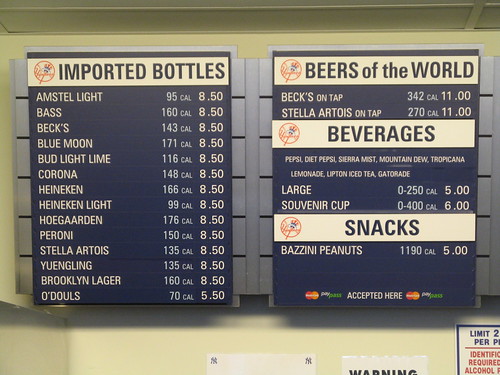Should sports stadiums be required to curb beer sales and improve safety features to protect fans in the stands?
Those are two of the questions being considered by a Manitoba judge following a wide-ranging inquest into the death of a spectator at a Canadian Football League game in Winnipeg in August 2006. The inquest concluded Friday after hearing from 50 witnesses over the last 15 months.
A lawyer for the CFL and the Winnipeg Blue Bombers argued Andrew Szabo’s deadly fall from the north-end stands at Canad Inns Stadium was a freak accident that neither a booze ban nor safety upgrades could have prevented.
“There have been millions of people there ... going up and down those stairs,” Bob Sokalski said. “[Mr. Szabo’s fall] was a unique, extraordinary event that was not readily foreseeable.”
Mr. Szabo, 52, was a chronic alcoholic, his widow, Barbara, testified at the start of the inquest last year. But he didn’t appear drunk the day the couple and a friend went to see the Bombers play, she said.
Mr. Szabo stumbled and fell down a flight of stairs near the start of the game, tumbled through a guardrail at the bottom and crashed onto the concrete several metres below. He died several hours later in hospital from internal bleeding and a broken pelvis that went undetected, according to Manitoba's chief medical examiner, Dr. Thambirajah Balanchandra.
The inquest was told Mr. Szabo’s blood-alcohol level, taken five hours after the fall, was more than double the legal driving limit — enough to indicate that he had consumed roughly 12 beers or the equivalent in hard liquor.
Most of the booze had been consumed at home. He drank two beers at the stadium prior to game time and had just purchased another two when he fell.
The inquest heard from people sitting near Mr. Szabo as well as security staff who remembered seeing the tall, lanky man. By all accounts, he did not appear to be intoxicated.
Medical experts testified that chronic alcoholics build up tolerance and learn how to avoid showing symptoms of drunkenness such as slurring their speech or losing their balance.
Still, provincial court Judge Mary Kate Harvie asked lawyers for all sides to comment on whether the Bombers should impose further restrictions on beer sales, which are currently limited to two cups per person at any one time.
Mr. Sokalski rejected the idea. He said Mr. Szabo had hardly consumed any alcohol at the stadium. He also said beer-sellers at such events are trained to look for impaired people and can refuse to serve them.
“And no one, including his wife, observed him to show visible signs of impairment.”
The inquest also considered how safe the north-end stands, which were built in 1966, really are. The guardrails have large openings of up to 53 centimetres — too big according to current building codes. But the space, noticeably wider than the average economy-class airplane seat, was perfectly acceptable when the stadium was built.
Judge Harvie has indicated she may recommend that stadiums and other public facilities be required to renovate every 20 years or so to meet new building codes. That would make building codes retroactive for the first time.
“I think that what we have heard evidence about is some public-use facilities — outdoor facilities that might be subject to the weather — and is there some room for consideration of some type of retroactivity?” she asked earlier in the week.
Mr. Sokalski said the move would be heavy-handed, because changes to building codes govern everything from staircases to seat sizes.
“Does that mean that you would have to tear the stadium apart [to make upgrades]? I think it does,” he said.
The inquest also focused on the health care Mr. Szabo received. Paramedics took him to Winnipeg’s Grace community hospital instead of the major trauma unit at the Health Sciences Centre. Barbara Szabo testified doctors at the Grace said her husband was doing fine and had no broken bones.
Hours later, his blood pressure plummeted and he was rushed to the Health Sciences Centre, where he died. Doctors there discovered a broken pelvis and internal bleeding.
Mr. Szabo’s widow has filed a lawsuit against the Grace hospital and the Winnipeg Regional Health Authority. The hospital’s lawyer, Bill Olson, has said the fracture was too small to appear on X-rays. He also said the Grace did not have advanced equipment at the time that could have detected the internal bleeding.
The judge is expected to issue her findings in the first half of 2011.

No comments:
Post a Comment